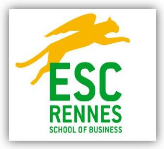|

Graduating Project
The determinants of green consumption
A study of socio-demographics factors as
determinants
MSC in International Marketing
Marine ETIEVENT
1st of December 2011
Graduating project supervisor: Dr. Yann Truong
Abstract
The main objective of this thesis is to investigate if the
socio-demographics factors could be seen as determinants of the consumption of
green products, in order to see if green consumers could have a specific
profile; if according to specific factors they are willing to consume or not
green products.
This paper permits to review the main determinants and barrier
of green consumption. In addition, this study permits to report the results of
a questionnaire held by 150 respondents in order to get accurate information
about the respondents (gender, income, education, place of living etc.) and
insight about their knowledge on this topic and their habits in term of green
consumption (if they are consuming).
Results from regression analysis revealed that the
socio-demographics factors do not seem to be linked to the consumption of green
products. Surprisingly, green purchases are not significantly related to
monetary barriers, or to the socioeconomic characteristics of the consumers. It
appears that pro-environmental behaviour or gender has an effect upon the
consumption of green products. Recommendations for business were established in
order to get insight about the profile of green consumers.

Acknowledgement
I would like to express my gratitude to my supervisor, Dr.
Yann Truong, whose expertise, understanding, and patience, added considerably
to my graduate experience. I appreciate his vast knowledge and skill in many
areas, and his assistance in writing reports.
I would like to thank my internship supervisor, Mrs Leroy, for
the assistance they provided at all levels of the research project.
Finally, I would like to thank Mrs Curley for taking time out
from his busy schedule to serve as my external reader.

Table of contents
Abstract~~~~~~~~~~~~~~~~~~~~~~~~~~ ~~~~~ -2-
Acknowledgment. -3-
List of figures -8-
List of tables~~~~~~~~~~~~~~~~~~~~~~~~~~~~~~~~~~~~~
-9-
Introduction~~~~~~~~~~~~~~~~~~~~~~~~~~~~~~~~~~~~~
-11-
I. Literature Review~~~~~~~~~~~~~~~~~~~~~~~~~~~~~~~~~
-12-
|
1.1 Environmental
Concern~~~~~~~~~~~~~~~~~~~~~~~~~~
-13-
|
|
|
1.2 Determinants of green consumption
|
-14-
|
|
1.3 Conclusion
|
-17-
|
1.4 Constraints to green consumption
|
-18-
|
|
|
1.5 Conclusion
|
-20-
|
|
II. Methodology
|
-21-
|
2.1 Research overview
|
-22-
|
|
2.1.1 Definition of the studied
variables......................................................... -22-
2.1.2 Research
objectives.................................................................................
-22-
2.2 Hypotheses -23-
2.2.1 H1: socio-economical characteristics have a positive
effect on
consumers buying decision of green
product................................................ -23- 2.2.1.1 H1a: the
gender has a positive effect on green buying......... -23- 2.2.1.2 H1b: the
level of income or revenue is positively linked to
consumers green buying
behavior.............................................. -24- 2.2.1.3 H1c: the
level of education is positively linked to the consumption
of green
products........................................................................
-24-
2.2.1.4 H1d: employment status is positively linked to the
consumption
of green
product............................................................................
-24- 2.2.1.5 H1e: the legal status is positively linked to green purchasing
behavior..........................................................................................
-24-
2.2.2 H2: living condition has a positive effect on consumers
green buying
decision -24-

2.2.2.1 H2a: The place of living is positively linked to green
buying
behavior~~~~~~~~~~~~~~~~~~~~~~~~~~~~~~ -25-
2.2.2.2 H2b: The household size is positively linked to green
buying
behavior~~~~~~~~~~~~~~~~~~~~~~~~~~~~~~ -25-
2.2.3 H3: The store type is has a positive effect on green
consumer
behavior~~~~~~~~~~~~~~~~~~~~~~~~~~~~~~~~ -25-
2.2.4 H4: Good knowledge / high environmental knowledge lead to
the consumption of green products -25-
2.2.5 H5: The intention to buy green
product is positively linked the act of
purchasing green product~~~~~~~~~~~~~~~~~~~~~~. -25-
2.3 Research
design~~~~~~~~~~~~~~~~~~~~~~~~~~~~~~~~~.-27-
2.4 Data
gatherin~~~~~~~~~~~~~~~~~~~~~~~~~~~~~~~~~~. -28-
2.4.1 Conjoint analysis -28-
2.4.2 Questionnaire Design -28-
2.4.3 Questionnaire testing~~~~~~~~~~~~~~~~~~~~~~~~~~ -29-
2.4.5 Participants~~~~~~~~~~~~~~~~~~~~~~~~~~~~~~~ -29-
2.5 Measuring and scaling~~~~~~~~~~~~~~~~~~~~~~~~~~~~~
-29-
2.5.1 Sampling types -29-
2.5.2 Sampling size -30-
2.6 Data processing and analysis~~~~~~~~~~~~~~~~~~~~~~~~~
-31-
2.7 Constraints and
limitations~~~~~~~~~~~~~~~~~~~~~~~~~~~ -31-
2.7.1 Time, money and workforce~~~~~~~~~~~~~~~~~~~~~~ -31-
2.7.2 Sampling~~~~~~~~~~~~~~~~~~~~~~~~~~~~~~~~~ -32-
2.7.3 Online questionnaire~~~~~~~~~~~~~~~~~~~~~~~~~~. -32-
III. Results and Analysis~~~~~~~~~~~~~~~~~~~~~~~~~~~~~~~
-33-
3.1 Introduction~~~~~~~~~~~~~~~~~~~~~~~~~~~~~~~~~~~
-34-
3.2 Questionnaire findings~~~~~~~~~~~~~~~~~~~~~~~~~~~~~
-34-
3.2.1 Personal information~~~~~~~~~~~~~~~~~~~~~~~~~~ -34-
3.2.2 Environmental knowledge~~~~~~~~~~~~~~~~~~~~~~~ -36-
3.2.3 Green consumption~~~~~~~~~~~~~~~~~~~~~~~~~~ -39-
3.3 Hypotheses testing~~~~~~~~~~~~~~~~~~~~~~~~~~~~~~~.
-43-
3.3.1 Data cleaning and normality testing -46-

3.3.2 Regression analysis -44-
3.3.2.1 Theoretical review -44-
3.3.3 Hypothesis 1: socio-economical characteristics have a
positive effect on
consumers buying decision of green product -44-
3.3.3.1 H1a: the gender has a positive effect on green buying
-47-
3.3.3.2 H1b: the level of income or revenue is positively linked
to consumers green buying behavior -49-
3.3.3.3 H1c: the level of education
is positively linked to the
consumption of green
product...................................................... -51-
3.3.3.4 H1d: employment status is positively linked to the
consumption of green product -53-
3.3.3.5 H1e: the legal status is positively linked to green
purchasing
behavior -54-
3.3.4 Hypothesis 2: living condition has a positive effect on
consumers green buyingdecision -54- 3.3.4.1 H2a: The place of living is
positively link to green buying behavior -57- 3.3.4.2 H2b: The household size
is positively link to green buying
behavior -58-
3.3.5 H3: The store type is has a positive effect on green
consumer behavior -60-
3.3.6 H4: Good green knowledge lead to the consumption of
green
products -62-
3.3.7 H5: The intention to buy green is positively link to green
buying
behavior -64-
IV. Conclusions and recommendations~~~~~~~~~~~~~~~~~~~~~~
-67-
4.1 Introduction~~~~~~~~~~~~~~~~~~~~~~~~~~~~~~~~~~~
-68-
4.2 Findings' analysis and discussion -68-
4.2.1 Socio-economical factors, living condition and store
type............... -68-
4.2.2 Green knowledge and
intention............................................................ -72-
4.3 Conclusion -73-
4. 4 Recommendations for
businesses~~~~~~~~~~~~~~~~~~~~~~~ -75-

| 


